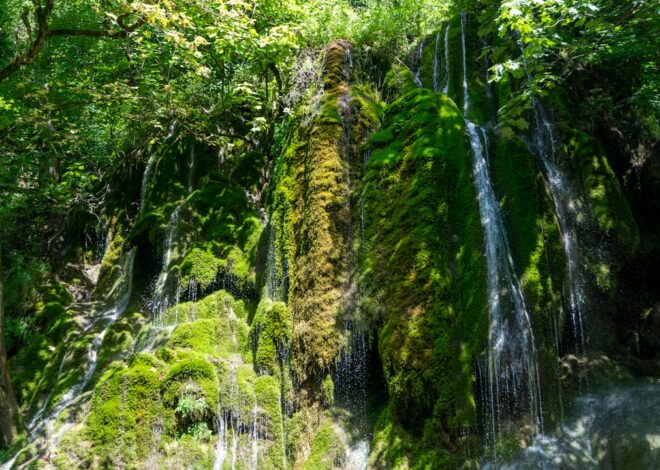
Biodiversity Travel: Exploring Natural Habitats Responsibly
Biodiversity refers to the variety of life on Earth, encompassing the diversity of species, ecosystems, and genetic variations within species. It is a crucial component of the planet’s health and resilience, influencing everything from climate regulation to food security. The intricate web of life that biodiversity represents is not merely a collection of organisms; it is a dynamic system where each species plays a specific role in maintaining ecological balance.
For instance, pollinators like bees and butterflies are essential for the reproduction of many flowering plants, which in turn provide food and habitat for other species. The loss of any single species can have cascading effects throughout an ecosystem, highlighting the interconnectedness of life. Understanding biodiversity also involves recognizing the threats it faces.
Habitat destruction, climate change, pollution, and invasive species are among the primary drivers of biodiversity loss. For example, deforestation in tropical regions not only eliminates trees but also disrupts the myriad species that depend on those forests for survival. The extinction of a single species can lead to the decline of others, as seen in the case of keystone species like sea otters, which help maintain the balance of marine ecosystems.
By appreciating the complexity and fragility of biodiversity, individuals can better understand their role in conservation efforts and the importance of sustainable practices in preserving the natural world.
Key Takeaways
- Biodiversity is the variety of life on Earth, including plants, animals, and ecosystems.
- Sustainable accommodations prioritize reducing their environmental impact and supporting local communities.
- Respecting wildlife means observing from a distance and not disturbing their natural behaviors.
- Supporting local conservation efforts can include volunteering, donating, or purchasing from local sustainable businesses.
- Engaging in responsible ecotourism activities involves activities that promote conservation and respect for the environment.
Choosing Sustainable Accommodations
When traveling, selecting accommodations that prioritize sustainability is a vital step toward minimizing one’s ecological footprint. Sustainable accommodations often implement practices that reduce energy consumption, conserve water, and minimize waste. For instance, eco-lodges may utilize solar panels for energy, rainwater harvesting systems for water supply, and composting toilets to reduce sewage output.
These establishments not only lessen their environmental impact but also often contribute to local economies by sourcing food and materials from nearby communities. Moreover, many sustainable accommodations engage in responsible tourism practices by promoting local culture and heritage. This can include offering tours led by local guides who share their knowledge about the region’s history and ecology.
By choosing to stay in such places, travelers support businesses that prioritize environmental stewardship and community engagement. This choice not only enhances the travel experience but also fosters a deeper connection with the destination, allowing visitors to appreciate the unique cultural and natural attributes of the area.
Respecting Wildlife

Respecting wildlife is paramount for anyone engaging in outdoor activities or visiting natural habitats. This respect manifests in various ways, including observing animals from a safe distance and refraining from feeding them. Feeding wildlife can disrupt their natural foraging behaviors and lead to dependency on human-provided food sources, which can be detrimental to their health and survival.
For example, bears that become accustomed to human food may venture into populated areas, leading to dangerous encounters for both bears and humans. Additionally, understanding and adhering to local regulations regarding wildlife interactions is crucial. Many national parks and protected areas have specific guidelines designed to safeguard both visitors and wildlife.
These may include designated viewing areas or restrictions on certain activities during breeding seasons. By following these guidelines, travelers contribute to the preservation of wildlife habitats and ensure that future generations can enjoy these natural wonders. Engaging in responsible wildlife observation not only enhances personal experiences but also fosters a culture of respect and conservation among all visitors.
Supporting Local Conservation Efforts
| Conservation Effort | Location | Impact |
|---|---|---|
| Community-based conservation projects | Rural areas | Engage local communities in protecting natural resources |
| Local wildlife sanctuaries | Various regions | Provide safe habitats for endangered species |
| Environmental education programs | Urban and rural schools | Teach local residents about the importance of conservation |
Supporting local conservation efforts is an essential aspect of responsible travel that can have lasting impacts on ecosystems and communities. Many regions rely on tourism revenue to fund conservation initiatives, making it imperative for travelers to choose activities and organizations that prioritize environmental protection. For instance, participating in guided tours led by conservation organizations can provide insights into ongoing projects aimed at preserving local flora and fauna while directly contributing to funding these efforts.
Moreover, travelers can engage with local communities by volunteering for conservation projects during their visits. Activities may include habitat restoration, wildlife monitoring, or educational outreach programs aimed at raising awareness about environmental issues. Such involvement not only aids conservation efforts but also fosters meaningful connections between visitors and local residents.
By understanding the challenges faced by these communities and their ecosystems, travelers can become advocates for sustainable practices long after their journeys have ended.
Engaging in Responsible Ecotourism Activities
Engaging in responsible ecotourism activities allows travelers to experience nature while minimizing their impact on the environment. Ecotourism emphasizes education, conservation, and community involvement, providing opportunities for visitors to learn about local ecosystems while supporting sustainable practices. Activities such as guided nature walks, birdwatching tours, or snorkeling excursions led by knowledgeable local guides can enhance appreciation for biodiversity while ensuring that tourism benefits the environment.
In addition to choosing eco-friendly activities, travelers should also consider their behavior during these experiences. For example, when hiking in sensitive areas, sticking to marked trails helps prevent soil erosion and protects native vegetation. Similarly, when participating in marine activities like snorkeling or diving, being mindful of coral reefs and marine life is crucial; touching or standing on coral can cause irreversible damage to these delicate ecosystems.
By adopting responsible behaviors during ecotourism activities, travelers contribute to the preservation of natural habitats while enjoying unique experiences.
Minimizing Environmental Impact

Minimizing environmental impact while traveling involves making conscious choices that reduce waste and conserve resources. One effective strategy is to adopt a minimalist approach to packing; bringing reusable items such as water bottles, shopping bags, and utensils can significantly decrease reliance on single-use plastics. Many destinations now offer refill stations for water bottles, making it easy for travelers to stay hydrated without contributing to plastic pollution.
Transportation choices also play a significant role in minimizing environmental impact. Opting for public transportation or walking instead of renting cars can reduce carbon emissions while providing a more authentic experience of the destination. In urban areas, using bicycles or electric scooters can be both eco-friendly and enjoyable ways to explore local attractions.
Additionally, travelers should consider offsetting their carbon footprint by supporting projects that promote renewable energy or reforestation efforts. By being mindful of their choices throughout their journey, travelers can significantly lessen their environmental impact.
Educating Yourself about Local Ecosystems
Educating oneself about local ecosystems is an integral part of responsible travel that enhances appreciation for biodiversity and fosters a sense of stewardship. Before visiting a new destination, researching its unique flora and fauna can provide valuable context for understanding the ecological dynamics at play. For instance, learning about endemic species—those found nowhere else on Earth—can deepen one’s appreciation for the importance of conservation efforts in preserving these irreplaceable organisms.
Participating in educational programs offered by local organizations or parks can further enrich the travel experience. Many destinations provide workshops or guided tours focused on specific ecological topics such as birdwatching, plant identification, or marine biology. Engaging with experts in these fields allows travelers to gain insights into the challenges facing local ecosystems while fostering a greater sense of responsibility toward protecting them.
This knowledge not only enhances personal experiences but also empowers travelers to advocate for sustainable practices within their own communities upon returning home.
Promoting Sustainable Travel Practices
Promoting sustainable travel practices extends beyond individual actions; it involves advocating for broader changes within the tourism industry and among fellow travelers. Sharing experiences with sustainable accommodations or responsible tour operators through social media or travel blogs can inspire others to make environmentally conscious choices during their journeys. Highlighting positive examples of ecotourism can create a ripple effect, encouraging more businesses to adopt sustainable practices.
Additionally, engaging with local governments or organizations focused on sustainable tourism can amplify efforts toward conservation and responsible travel initiatives. Supporting policies that prioritize environmental protection and community engagement ensures that tourism benefits both visitors and residents alike. By becoming advocates for sustainable travel practices, individuals contribute to a growing movement that seeks to protect our planet’s natural resources while fostering meaningful connections between people and places.
In conclusion, understanding biodiversity is essential for appreciating the intricate relationships within ecosystems and recognizing the importance of conservation efforts. Choosing sustainable accommodations allows travelers to support environmentally friendly practices while respecting wildlife ensures that natural habitats remain undisturbed. Supporting local conservation initiatives fosters community engagement and promotes responsible ecotourism activities that minimize environmental impact.
Educating oneself about local ecosystems enhances appreciation for biodiversity while promoting sustainable travel practices encourages broader changes within the tourism industry. Through these collective efforts, travelers can play an active role in preserving our planet’s natural heritage for future generations.
FAQs
What is biodiversity travel?
Biodiversity travel refers to the act of visiting natural habitats and ecosystems in order to observe and appreciate the variety of plant and animal species that exist within them. It is a form of ecotourism that focuses on promoting conservation and responsible travel practices.
Why is it important to explore natural habitats responsibly?
Exploring natural habitats responsibly is important in order to minimize the negative impact of tourism on the environment and wildlife. By practicing responsible travel, visitors can help preserve the biodiversity of these habitats for future generations.
What are some examples of natural habitats that can be explored through biodiversity travel?
Examples of natural habitats that can be explored through biodiversity travel include rainforests, coral reefs, savannas, wetlands, and mountain ecosystems. These habitats are home to a wide variety of plant and animal species, making them ideal destinations for biodiversity travel.
What are some ways to explore natural habitats responsibly?
Some ways to explore natural habitats responsibly include staying on designated trails, avoiding disturbing wildlife, minimizing waste and pollution, supporting local conservation efforts, and choosing eco-friendly accommodations and tour operators.
How does biodiversity travel contribute to conservation efforts?
Biodiversity travel contributes to conservation efforts by raising awareness about the importance of preserving natural habitats and the species that inhabit them. Additionally, the revenue generated from responsible tourism can support local conservation initiatives and provide economic incentives for protecting biodiversity.


